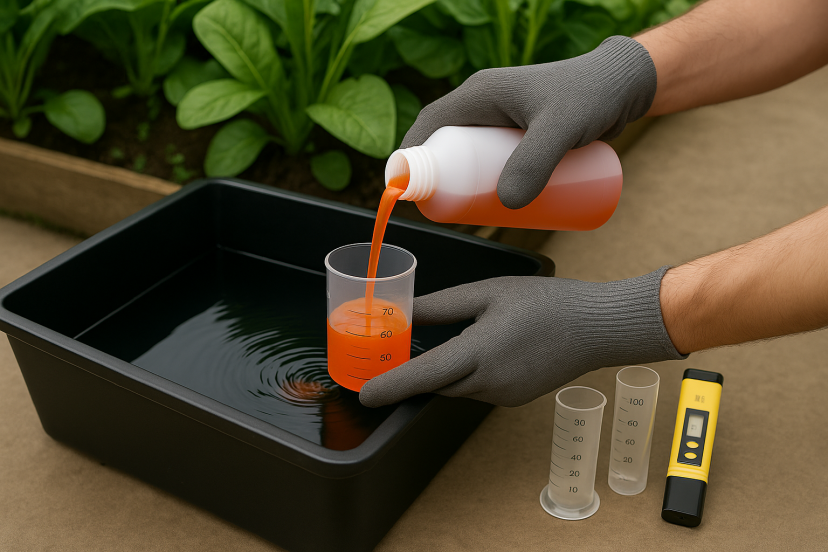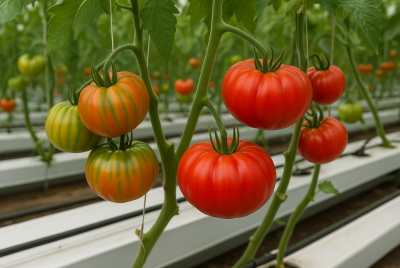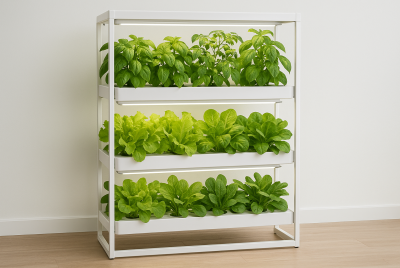Hydroponic Nutrient Solution: Best Options for Thriving Plants
We may earn a commission for purchases made using our links. Please see our disclosure for more details.
Have you ever set up a hydroponic garden only to notice that your plants look green but stop growing as expected? It’s a common frustration. The truth is, hydroponics removes soil from the equation, and while that eliminates weeds and many pests, it also eliminates the natural source of plant food. Without a proper hydroponic nutrient solution, your plants simply don’t get the minerals they need to thrive. The good news? Modern nutrient solutions are easy to use, scientifically balanced, and designed to maximize growth and yield.
What Is a Hydroponic Nutrient Solution?
A hydroponic nutrient solution is essentially liquid plant food mixed into water. Since there’s no soil in hydroponics, the solution provides everything a plant would normally extract from the ground.
- Macronutrients: Nitrogen (N), phosphorus (P), and potassium (K) are the “big three” that fuel plant growth, along with calcium, magnesium, and sulfur.
- Micronutrients: Plants require trace elements such as iron, manganese, zinc, copper, molybdenum, and boron in tiny doses, yet these nutrients play an essential role in overall growth and health.
The key difference between soil and hydroponics is efficiency. In soil, nutrients can get locked up or washed away. In hydroponics, nutrients are dissolved directly into water, reaching the roots without barriers. This gives gardeners precise control over plant nutrition.
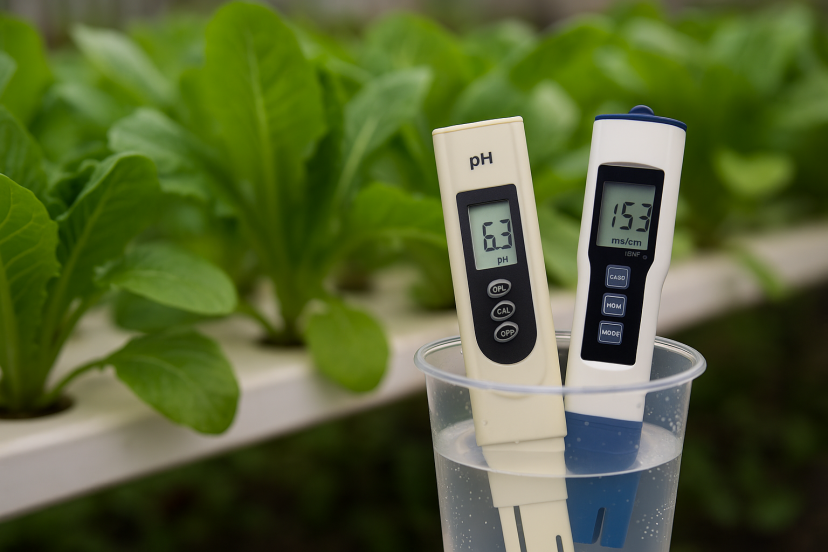
Understanding Plant Nutrition in Hydroponic Systems
Scientific studies continue to show the advantages of hydroponic nutrient management. For instance, a study on spinach growth in hydroponic systems found that when pH levels dropped below the optimal 5.5–6.5 range, nutrient uptake declined sharply. However, increasing the electrical conductivity (EC) of the solution helped restore growth and improve tissue mineral content.
Another research analysis on nutrient control in soilless cultures showed how fluctuations in EC and pH in recirculating hydroponic systems can cause nutrient lockout and reduce plant performance. Maintaining balanced levels was linked to stronger root systems and higher yields.
When pH drifts too high or low, even if nutrients are present, plants can’t absorb them effectively. This condition is called nutrient lockout, and it’s one of the most common mistakes beginners make.
The takeaway? Hydroponics gives you more control, but that control comes with responsibility. Monitoring and adjusting your nutrient solution ensures your plants don’t just survive—they thrive.
Choosing the Right Hydroponic Nutrient Solution
Selecting a nutrient solution isn’t just about picking any bottle off the shelf. Several factors matter:
Liquid vs. Powder
- Liquid solutions are beginner-friendly, easy to measure, and quick to mix. They’re great if you want convenience.
- Powdered nutrients give more flexibility and tend to be more cost-effective in bulk. Experienced gardeners choose powders when they want to mix their own nutrient formulas.
pH and EC Balance
A nutrient solution only works if the pH is within range (5.5–6.5 for most crops). EC indicates the solution’s level of concentration. Too low and plants starve, too high and roots burn. A simple pH and EC meter can save countless headaches.
Crop-Specific Needs
Not all plants want the same balance. Leafy greens thrive on higher nitrogen, while fruiting crops like tomatoes and peppers need more potassium during flowering. Matching your nutrient formula to your plant’s growth stage is key.
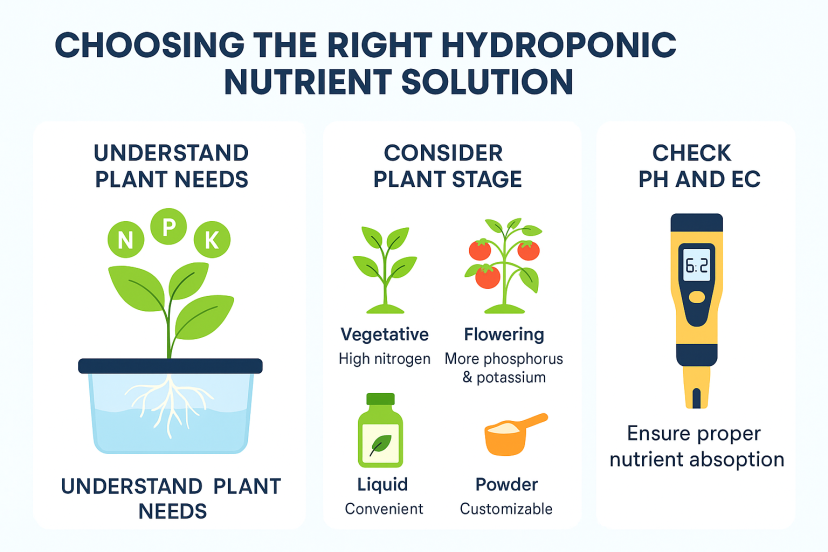
Top 5 Hydroponic Nutrient Solutions
Here are five excellent options, each trusted by gardeners and designed for different needs.
1. General Hydroponics Flora Series
Among growers, the General Hydroponics Flora Series stands out as a widely trusted and frequently used nutrient system around the globe. It’s a three-part formula—FloraGro, FloraMicro, and FloraBloom—that lets you adjust feeding depending on whether your plants are in the growth or bloom stage. Reliable, flexible, and proven for decades.
2. AeroGarden Hydroponic Growing System Fertilizer
Perfect for hobby growers with countertop gardens, this solution is designed to pair with AeroGarden systems but works in most small hydro setups. It delivers balanced nutrition for herbs and leafy greens, making it a great choice for beginners.
3. VIVOSUN Hydroponic Nutrient Fertilizer
The VIVOSUN formula supports vegetative growth, helping plants establish strong roots and lush foliage early on. If you’re just starting hydroponics and want simple results, this is a user-friendly pick.
4. Fox Farm Liquid Nutrient Trio
The Fox Farm Trio delivers bold results. This kit provides three nutrient solutions: Grow Big, the Tiger Bloom, and Fox Farm Big Bloom. This system works well for both indoor and outdoor hydro setups. Many growers love it for its ability to boost flowering plants and produce rich harvests.
5. Humboldts Secret Base Nutrient System
This two-part liquid formula offers a complete nutrient profile in a straightforward package. It’s flexible enough for various crops and simple to use, making it a solid pick for both beginners and experienced gardeners.
| Product | Best For | Key Features |
| General Hydroponics Flora Series | All growth stages | 3-part system (Gro, Micro, Bloom); customizable feeding; proven reliability |
| AeroGarden Hydroponic Fertilizer | Herbs & leafy greens | Designed for small systems; easy-to-use packets; balanced nutrition |
| VIVOSUN Nutrient Fertilizer | Vegetative growth | Supports root development; lush foliage; beginner-friendly formula |
| Fox Farm Liquid Nutrient Trio | Flowering & fruiting plants | Includes Grow Big, Tiger Bloom, and Big Bloom; enhances bloom quality |
| Humboldt’s Secret Base Nutrient System | Versatile crops | 2-part complete formula; flexible across crops; simple to use |
Practical Tips for Gardeners
Choosing the right product is only half the job. How you use it matters just as much.
- Start Light: Always begin with a weaker solution and increase gradually. Overfeeding is worse than underfeeding.
- Monitor pH and EC: Test weekly, or even daily if you’re running a recirculating system.
- Flush Regularly: Every few weeks, flush your system with clean water to prevent salt buildup.
- Adjust Per Crop: Leafy greens, herbs, and fruiting plants each have unique needs. Follow feeding charts but tweak as your plants show signs.
- Learn from Soil Gardening: If you’ve grown crops like root vegetables in soil, you already know plants have different feeding demands. Hydroponics just makes these needs more precise.
Conclusion
A hydroponic system without the right nutrient solution is like a car without fuel—it won’t get far. By choosing a trusted formula, monitoring your pH and EC, and adjusting based on crop needs, you set your plants up for success. Whether you’re growing herbs on your kitchen counter or tomatoes in a greenhouse, the right solution makes all the difference. Hydroponics may feel technical at first, but once you understand how nutrient solutions work, it becomes a simple, rewarding way to grow fresh food year-round.
FAQs
1. What’s the difference between organic and synthetic nutrient solutions?
Organic solutions use natural sources like fish emulsion or kelp, while synthetic ones are lab-formulated minerals. Organic tends to improve flavor but may clog systems, while synthetic offers precise control.
2. How frequently should I add nutrients to my hydroponic plants?
Most systems feed continuously since nutrients are in the water supply. However, always adjust based on growth stage and system type.
3. Can I make a DIY nutrient solution at home?
It’s possible but tricky. Homemade mixes often lack balance and stability. For beginners, commercial formulas are safer and more reliable.
4. What pH range works best for most hydroponic systems?
Between 5.5 and 6.5 works for most crops. Fruiting plants sometimes benefit from slightly lower pH during bloom.
5. Which solution works best for beginners?
General Hydroponics Flora Series or AeroGarden Nutrients are great starting points due to their simplicity and clear instructions.

